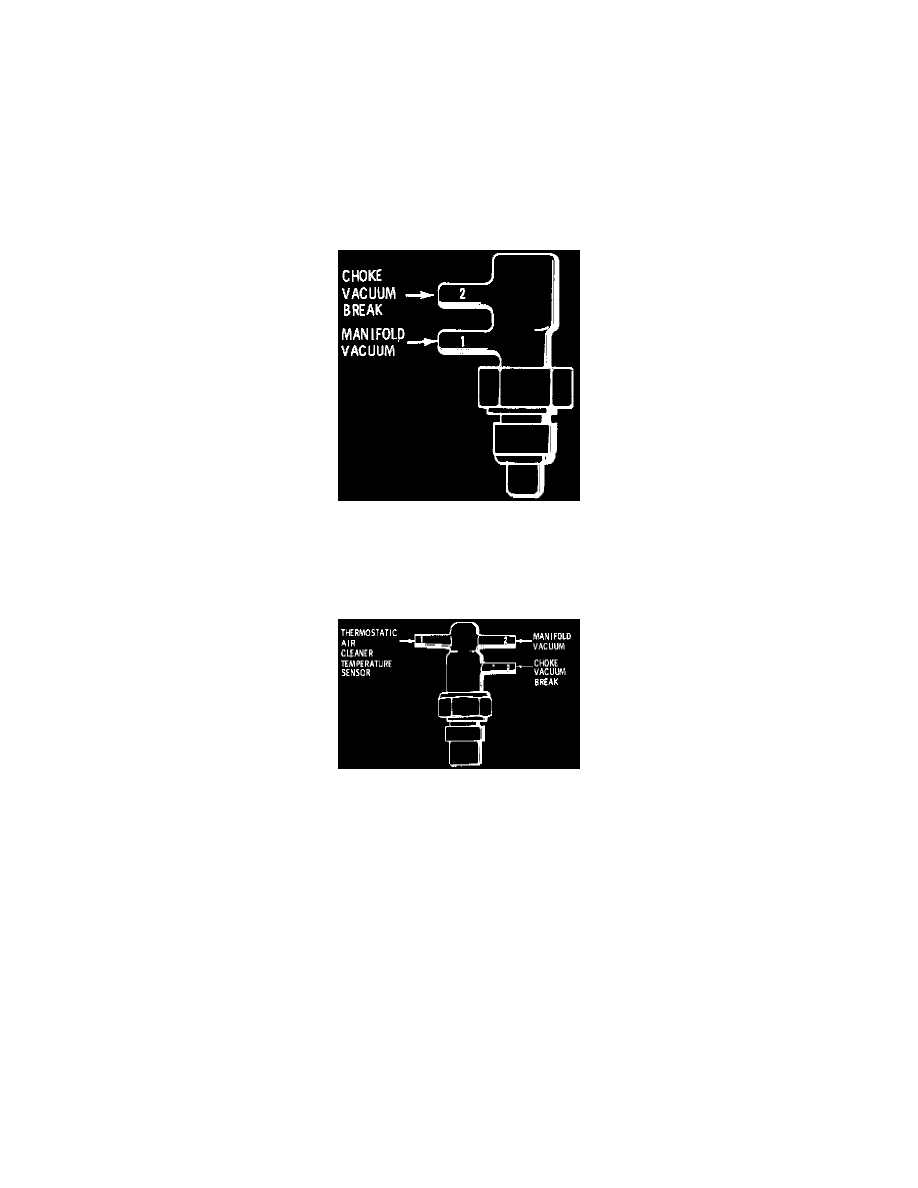Caprice V6-229 3.8L VIN K 2-bbl (1982)

Thermal Vacuum Valve - Carb: Testing and Inspection
Choke Vacuum Break TVS
WHEN COLD
Cold, the valve should be closed. If necessary, cool the valve below its calibration point. Replace if defective.
AT NORMAL OPERATING TEMPERATURE
The valve should be open. This can be checked by disconnecting the top hose and connecting a vacuum gauge to it. There should be vacuum
present with engine running.
NOTE: A valve stuck in the closed position can cause poor start condition and/or stalling after start up.
Fig 1 Choke Vacuum Break Thermal Vacuum Switch (2-port),
2 Port Type
With engine coolant temperature below the switching point, passage of vacuum should be restricted between ports 1 and 2--Fig 1.
With engine coolant temperature above the switching point, vacuum should pass freely through ports 1 and 2--Fig 1.
Fig 2 Choke Vacuum Break Thermal Vacuum Switch (3-port),
3 Port Type
When engine coolant temperature is below the switching point, vacuum should pass through ports 1 and 2--Fig 2. When engine coolant
temperature is above the switching point, vacuum should pass through ports 1 and 3--Fig 2.
NOTE:
-
SEE EMISSION CONTROL APPLICATION CHARTS to determine application of control switches and valves.
-
Refer to the number stamped on the base of the switch or valve for calibrated switching or activation temperatures.
